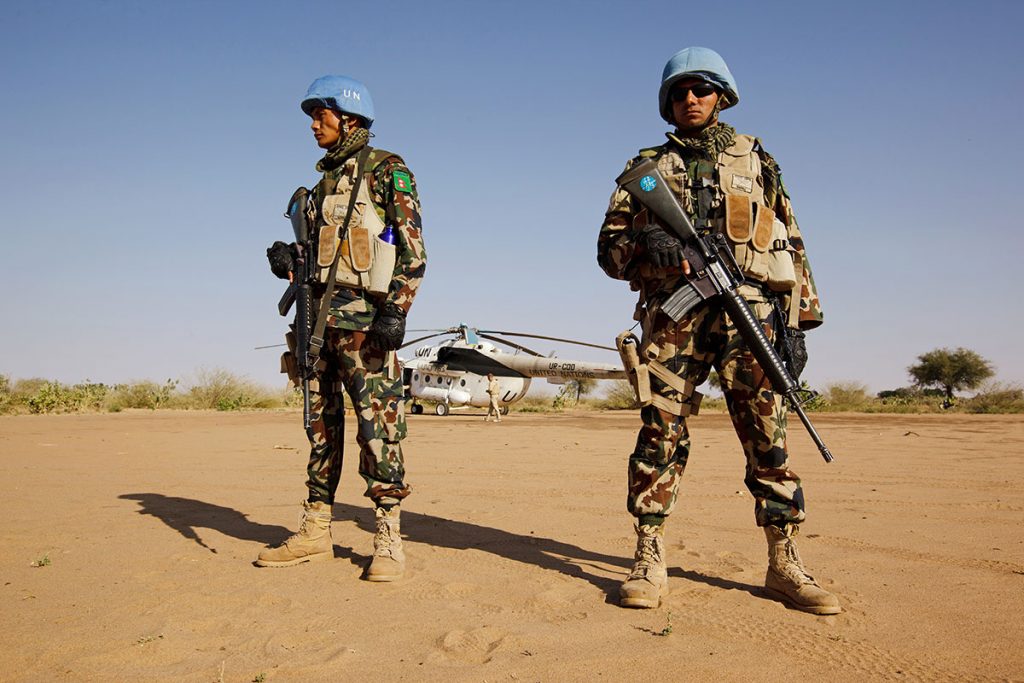Tore Listou was in 2020 a part of the EPON team completing a report on the UN Mission in Darfur (UNAMID). The research report looked at the Effectiveness of UNAMID and was completed by a team of eight researchers. Partly based on research undertaken during the field visit to Darfur, Tore wrote the newly published article called “The infrastructures of war and peace”.
The article explores the differences in the value of infrastructure between the UN and host nations and proposes a research agenda to understand the impact of handing mission infrastructure over to a host nation. The article looks at the case of UNAMID Sector South Headquarters in Nyala, South Darfur where the facilities were handed over to the government after UNAMID withdrew. Plans to make the facilities into a university and training facility for police failed as residents in the area vandalized the headquarters, taking equipment that was supposed to be there for the university and the training facility.
Listou highlights that “the mission’s infrastructure could have both positive and negative implications for the host nation and for local communities” and he looks further into the institutional infrastructures, material infrastructures and social infrastructures of both UN peace support operations and host nations. The infrastructures, or resources, of a mission are tightly linked up to that of the host nation and “The more specialized a resource is, the higher value it has for its primary use and primary actors, but the less value in other constellations…. infrastructure optimally designed for the mission could improve the mission’s effectiveness and efficiency but on the expense of its value for the host nation after mission draw-down”.
Listou concludes that “Assessing the effectiveness of a Peace Support Operation (PSO) could benefit from analyzing the ties and adaptabilities between the infrastructures to understand how the value of such a complex resource changes when the responsibility for a material infrastructure is handed over from one institutional infrastructure (the UN) to another (the host nation)”.
The EPON secretariat had a talk with Listou about the article and future research plans where he would like to explore 1) the political processes forming the mission mandate and their implications for the design of mission-specific infrastructures, 2) coordination between the mission material infrastructure and the physical infrastructures of the host nation and 3) the actual effects, both positive and negative, the mission infrastructure has on a host nation and local communities when the mission withdraws and hands infrastructure over to the host nation.
The article is an important contribution to an area of research that to a degree has not been explored, and EPON looks forward to following the work moving forward.
The article can be found here: Listou (2021). The infrastructures of war and peace or you can send a request to the author at tlistou@mil.no.
Abstract
Purpose – The purpose of this paper is to identify the need for and develop a framework for research on the effects UN peace operation infrastructure has on a host nation. Mission infrastructure serves primarily to sustain a mission. As the mission terminates, infrastructure is often transferred to the host nation. The mission infrastructures could have both positive and negative implications for the host nation and for local communities.
Design/methodology/approach – Exploratory approach to develop a foundation for a research agenda in an area with little existing research. Identify theoretical contributions related to infrastructures, combine with primary data from one peace operation, secondary data from five other peace operations and from the UN repositories.
Findings – This study proposes a research agenda. As such our findings relate to the identification and classification of different infrastructures and their interdependencies.
Research limitations/implications – This framework would contribute to new ways of exploring and analysing both the effectiveness of peace operations and the impact a mission has on the development in the host nation.
Practical implications – This study proposes a framework for research. As such, it will have implications primarily for researchers.
Social implications – Understanding the interdependencies between mission infrastructures and the material and social infrastructures of a host nation would help understanding what value mission infrastructure brings to a host nation and the local communities.
Originality/value – Analysing the logistics in peace support operations as networks of infrastructures bring new perspectives into humanitarian logistics.
